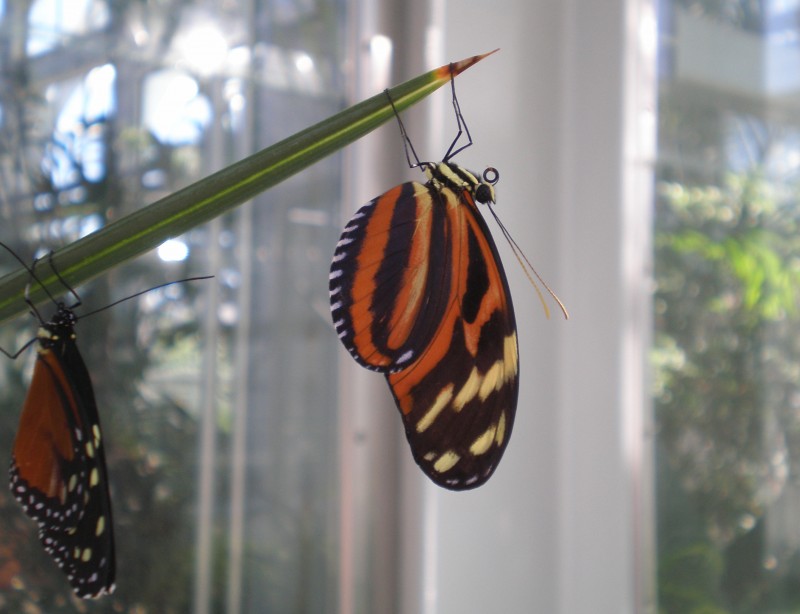Proboscis: Zipping it Together

Tiger longwing butterfly or Heliconius ismenius. Notice the proboscis on this one is already formed and curled.
I find myself fascinated by butterfly anatomy more and more each day as I work with and learn about these remarkable creatures. Even though I have only been with Butterflies LIVE! for a few weeks, I have already witnessed and captured some seemingly small but profound events. On one such occurrence I was able to capture a peculiar but essential process just after this tiger longwing (Heliconius ismenius) emerged from his chrysalis.
Butterflies, or Lepidopetera, have a special proboscis that allows them to suck nectar from flowers, juice from rotting fruits, and minerals from small puddles. Some butterflies, like those in the longwing family, even have a specially adapted proboscis that allows them to ingest pollen. This gives them access to amino acids lacking in their nectar diet that can help them reproduce and extend their lifespan.
The proboscis is vital to the survival of a butterfly and they cannot live if it has not formed properly. When they first emerge from their chrysalis their proboscis isn’t fully developed. In fact, the proboscis is actually split in two and they must curl and uncurl it repeatedly until it fuses or zips together. Amazing!